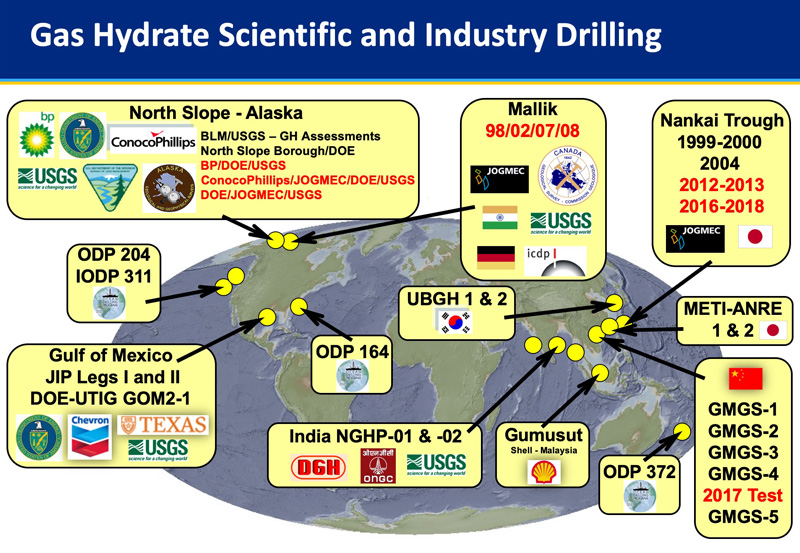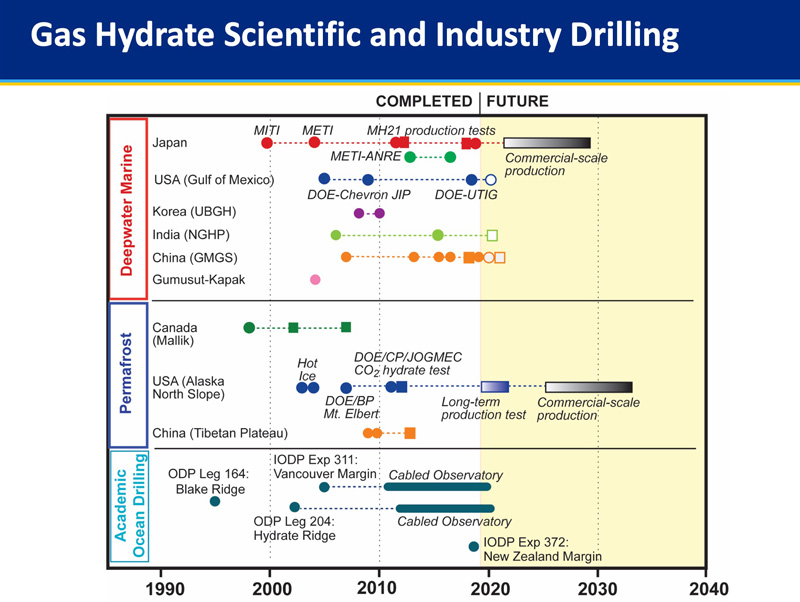Gas hydrate field production tests, laboratory studies, and computer modeling have documented the fact that gas hydrates hosted in sand-rich, conventional reservoirs systems, can occur at high concentrations and can be produced with conventional hydrocarbon production technologies.

Map of past scientific and industry drilling activities conducted by countries, private sector companies, government agencies, and academic institutions that have helped to refine global gas hydrate resource estimates and characterize the energy resource potential of gas hydrates.
Gas hydrate field production tests, laboratory studies, and computer modeling have documented the fact that gas hydrates hosted in sand-rich, conventional reservoirs systems, can occur at high concentrations and can be produced with conventional hydrocarbon production technologies.
Initially, gas hydrate production studies focused on well-known gas hydrate accumulations in onshore Arctic permafrost environments. The Mallik site, in the outer Mackenzie River Delta of northern Canada, and the Eileen/Tarn Gas Hydrate Accumulations on the Alaska North Slope have each been the focus of several important field production tests.
In 2013, the government of Japan reached an important milestone by undertaking the first test of a marine gas hydrate accumulation in the Nankai Trough located along the southeastern margin of Japan.

Timeline of past scientific and industry drilling activities conducted by countries, private sector companies, government agencies, and academic institutions that have helped to refine global gas hydrate resource estimates and characterize the energy resource potential of gas hydrates. Circles indicate geoscience focused projects and squares indicate production testing projects.
In 2017, a second gas hydrate production test was conducted in the Nankai Trough to evaluate various completion and production systems. Also in 2017, the Government of China completed the first production test of a marine gas hydrate accumulation in the South China Sea. The completed Arctic permafrost and deep marine gas hydrate production tests have confirmed that gas hydrate can be produced by simply depressurizing the hydrate-bearing reservoir; thus, allowing the gas released from the solid hydrate structure to be produced to the surface much like gas from conventional reservoirs.
Additional gas hydrate production testing has been proposed and is being planned for offshore China, Japan, and India. Also, the initial phases of a new gas hydrate testing project located on the Alaska North Slope was started in late 2018 and is scheduled to include extended production testing operations (https://www.netl.doe.gov/node/8020).